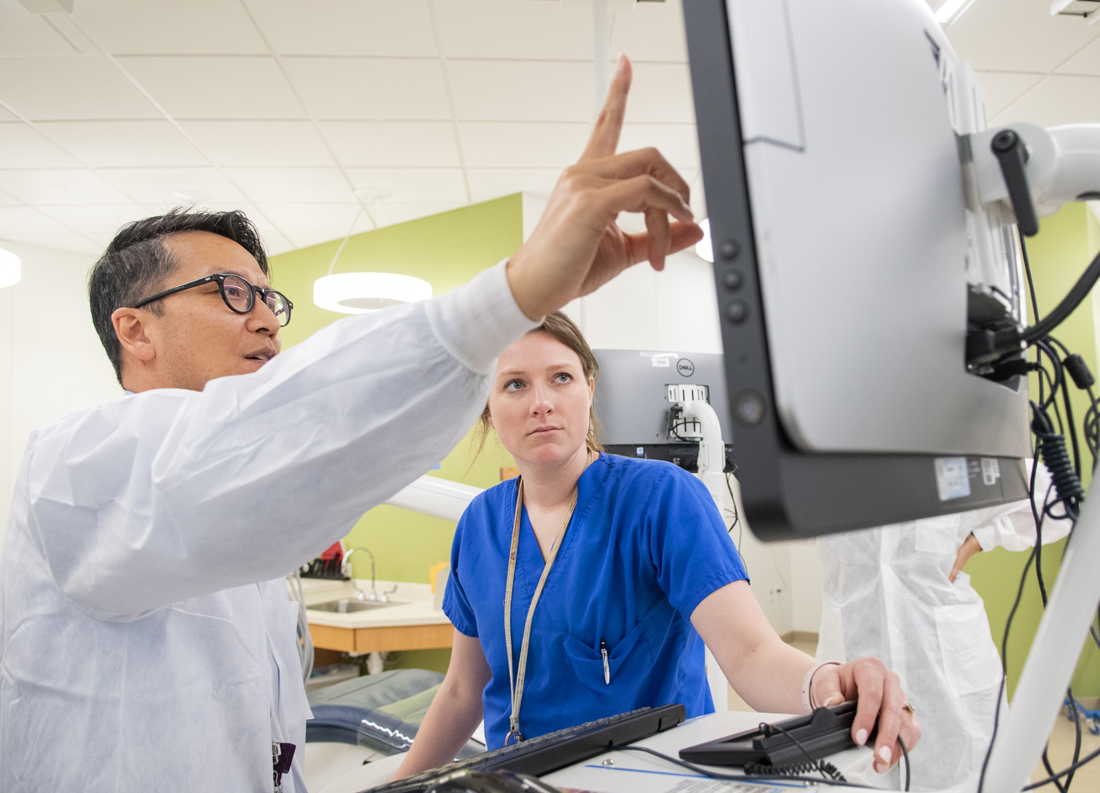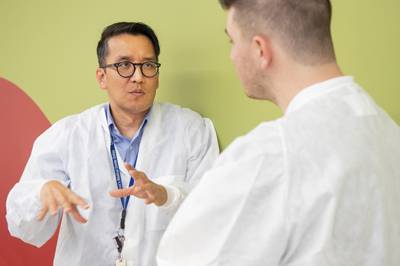Expertise in the house

Orthodontic residents have upped their savvy in craniofacial complexities this year.
A unique in-clinic partnership between craniofacial orthodontist Dr. Yong Jong Park from Children’s Health means hands-on, shared expertise with orthodontic graduate students one Friday each month. The collaboration is a first for the school’s graduate orthodontics program. Park specializes in treating pediatric cleft palate, cleft lip, craniofacial anomalies, dentofacial deformities and beyond.
Before last spring, graduate students’ exposure to complex cases was mostly acquired through academic learning at the hospital and in the lecture hall, says Dr. Larry Tadlock, Texas A&M College of Dentistry orthodontics program director and department head.
“Dr. Park was brought here to enhance our residents’ clinical training in the treatment of children with craniofacial anomalies,” he says. “Now they have an opportunity to serve the community and treat this group of patients under Dr. Park’s supervision.”

Once-a-week rotations at Children’s Medical Center Dallas, with third-year residents on Mondays and second-year residents on Wednesdays, means making morning rounds with the craniofacial team there. They accompany specialists from 12 Children’s departments, including surgeons, speech pathologists, developmental psychologists, pediatric dentists and social workers, Park explains. After lunch, they reconvene to discuss cases and come up with treatment plans.
With that insight, orthodontic residents have crucial background information at the ready when patients start their orthodontic treatment at the dental school.
“Sometimes we’re setting them up for a surgical procedure. So we work with Dr. Park and the surgery team at Children’s,” says Dr. Theresa Coleman, a third-year orthodontics resident.
Six “families” of orthodontic residents, which comprise a student from each level of the graduate program, follow one craniofacial patient at a time from start to finish. Coleman works side by side with second-year resident Dr. Lauren Brubaker and a first-year graduate student. Throughout each patient’s treatment plan, the team from Children’s and the dental school coordinate necessary surgeries and follow-up orthodontic work.
This collaboration can mean making impressions and providing photos so the surgeon, for example, knows exactly how the patient is progressing and plans appointments and/or surgeries accordingly. All aspects are invaluable background when residents graduate and move into private practice.
“We are exposed to so many techniques and options,” says Dr. Adam Patenaude, third-year orthodontics graduate student. “Craniofacial treatment reaches a population that many orthodontists are unprepared to handle.”
Patients with complex conditions and varied medical histories come from all over north Texas and surrounding states, including Oklahoma, Louisiana and Arkansas, Park says. Coleman is currently working with a teenage patient from Colorado.
“It’s a win-win—the treatment for them and, at the same time, the residents have the opportunity to treat a patient and receive education,” Park says.
Park has had such a positive influence on residents, Tadlock says, that one current resident has accepted a craniofacial fellowship when she graduates in May. A previous resident has already completed such a program.
“Having a fellowship-trained orthodontist who went above and beyond the standard orthodontic training makes us lucky,” says Patenaude. “He offers us great insight into cases and compromises that are inevitable. He also is very kind and approachable, making learning under his guidance valuable for everyone.”
Beyond the partnership’s benefits to students and patients, Park says the experience with students has been a win for him as well.
“Actually, I’m learning, too,” he says. “Sometimes you have to go back and refresh your memory. They’re smart and they have good questions. ‘OK, I haven’t thought of that.’ I have to be very sharp, which is good.”